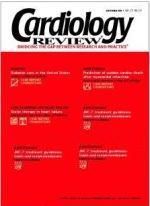Publication
Article
Beneficial cardiovascular medicines underused in the elderly
The use of proven therapies for primary and secondary prevention of cardiovascular disease in older adults is inadequate. As published in the American Journal of Geriatric Cardiology (2004;13[3]:161-167), data from the Cardiovascular Health Study reveal that most elderly persons with hyperlipidemia, atrial fibrillation, or congestive heart failure (CHF) were not receiving therapies shown in multiple, randomized controlled clinical trials to reduce cardiovascular morbidity and mortality. Caroline S. Rhoads, MD, associate director of the Adult Medicine Clinic at Harborview Medical Center, Seattle, Washington, is lead author of the report.
The Cardiovascular Health Study included 5,201 community-dwelling adults aged 65 years or older who were recruited in 1989 and 1990; 3 years later, 687 African Americans were recruited for the study. A medication inventory was conducted for each participant.
The number of medications used to treat hypertension increased slightly from an average of 1.5 per person in 1990 to 1.7 per person in 1999. Among persons without coronary artery disease (CAD), the use of calcium antagonists and angiotensin-converting enzyme (ACE) inhibitors increased steadily, while
the use of thiazide diuretics decreased. By 1999, thiazide diuretics, calcium antagonists, and ACE inhibitors were being used about equally. Among those without CAD, calcium antagonists were the most commonly used drug class in the 1990s. The use of ACE inhibitors increased steadily in this population, whereas beta blocker use declined until 1994, after which time their use increased.
In 1989 and 1990, about 5% of the participants were taking lipid-lowering medication. By 1996, 38% of subjects eligible for lipid-modifying therapy under the National Cholesterol Education Program guidelines were treated; 16% of those with CAD and only 33% with CAD and total cholesterol levels in the highest quintile (267 to 410 mg/dL) were treated. Older age was one of the factors associated with nontreatment, along with diminishing functional status and higher levels of high-density lipoprotein cholesterol.
Sixteen percent of the cohort had diabetes at study entry. About half of the subjects with diabetes were taking antidiabetic agents at baseline, mostly monotherapy (either oral hypoglycemic agents alone or insulin alone). At the 1997 follow-up, the overall prevalence of drug treatment declined slightly, and
the use of insulin increased to 35%, while the use of oral hypoglycemic agents fell to 50%. In 1997, daily aspirin use was reported by 33% of the participants and, despite a high use of statins, only 8% had low-density lipoprotein cholesterol levels less than 100 mg/dL.
Of the subjects with atrial fibrillation, 13% took warfarin and 28% took aspirin in 1989. Aspirin use remained stable and warfarin use increased over the following 7 years, such that warfarin use reached 50% by 1996. Aspirin or warfarin was used by 83% of those with atrial fi-brillation who were younger than 80 years, and 63% of those older than 80 years.
At baseline, 4.8% of the subjects had CHF. Among these persons, treatment with ACE inhibitors increased from 26% in 1989 to 36% in 1995. The mean doses of ACE inhibitors used were much lower than those used in clinical trials showing efficacy in CHF: 54.2 mg daily for captopril, 8.9 mg daily for enalapril, and 11.7 mg daily for lisinopril. Among the participants who developed CHF during the course of follow-up, ACE inhibitor use remained stable at 42% in 1990 versus 40% in 1995. The odds of starting ACE inhibitor therapy increased with reduced ejection fraction compared with normal ejection fraction.
The authors conclude that subjects at highest risk were no more likely to start treatment for hyperlipidemia, atrial fibrillation, and CHF than those at lower risk. Also, “control of blood pressure and cholesterol were particularly low in diabetics,” they write.The impact of undertreatment of older individuals “is likely to be substantial,” they add, noting that treatment rates were less than 50% for each of the conditions studied.
